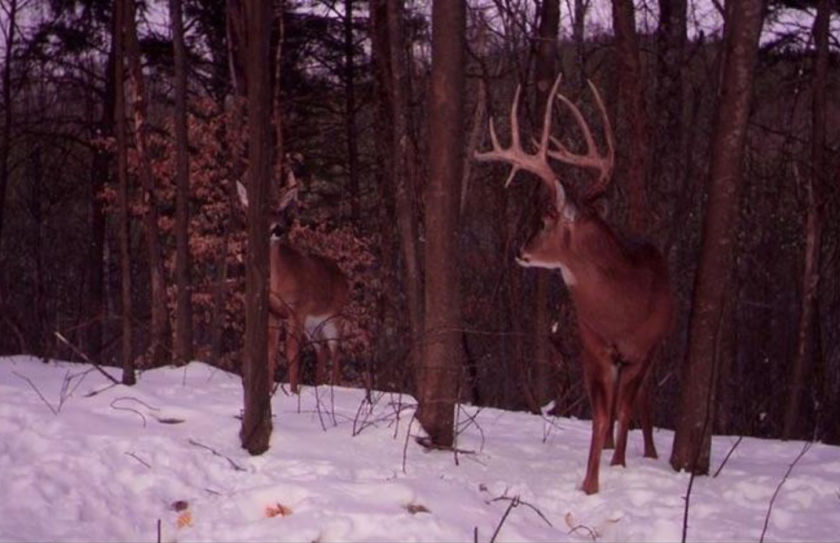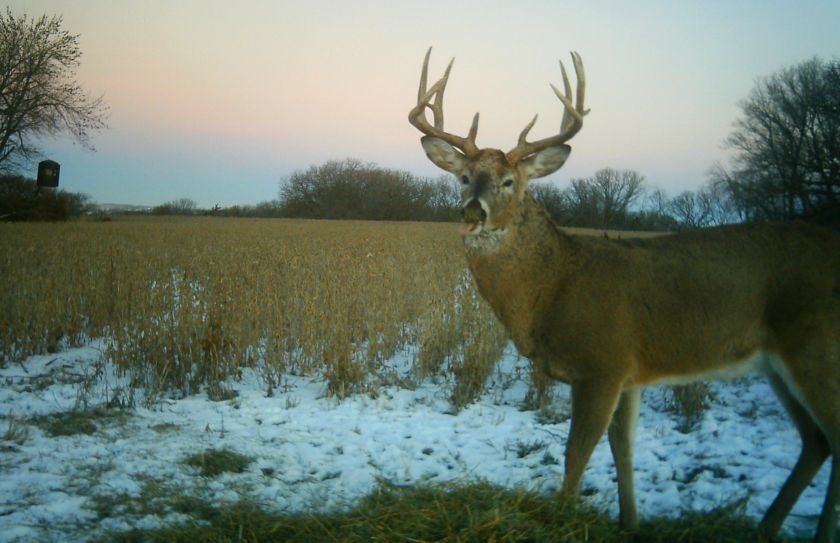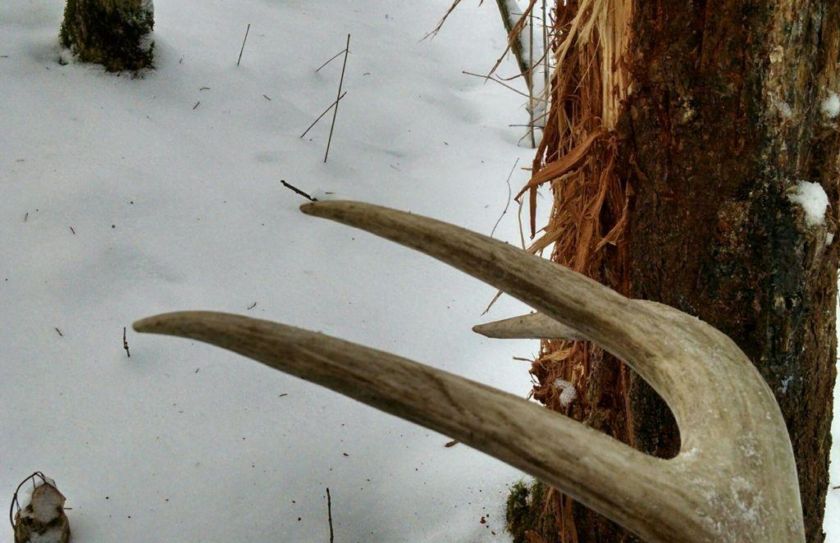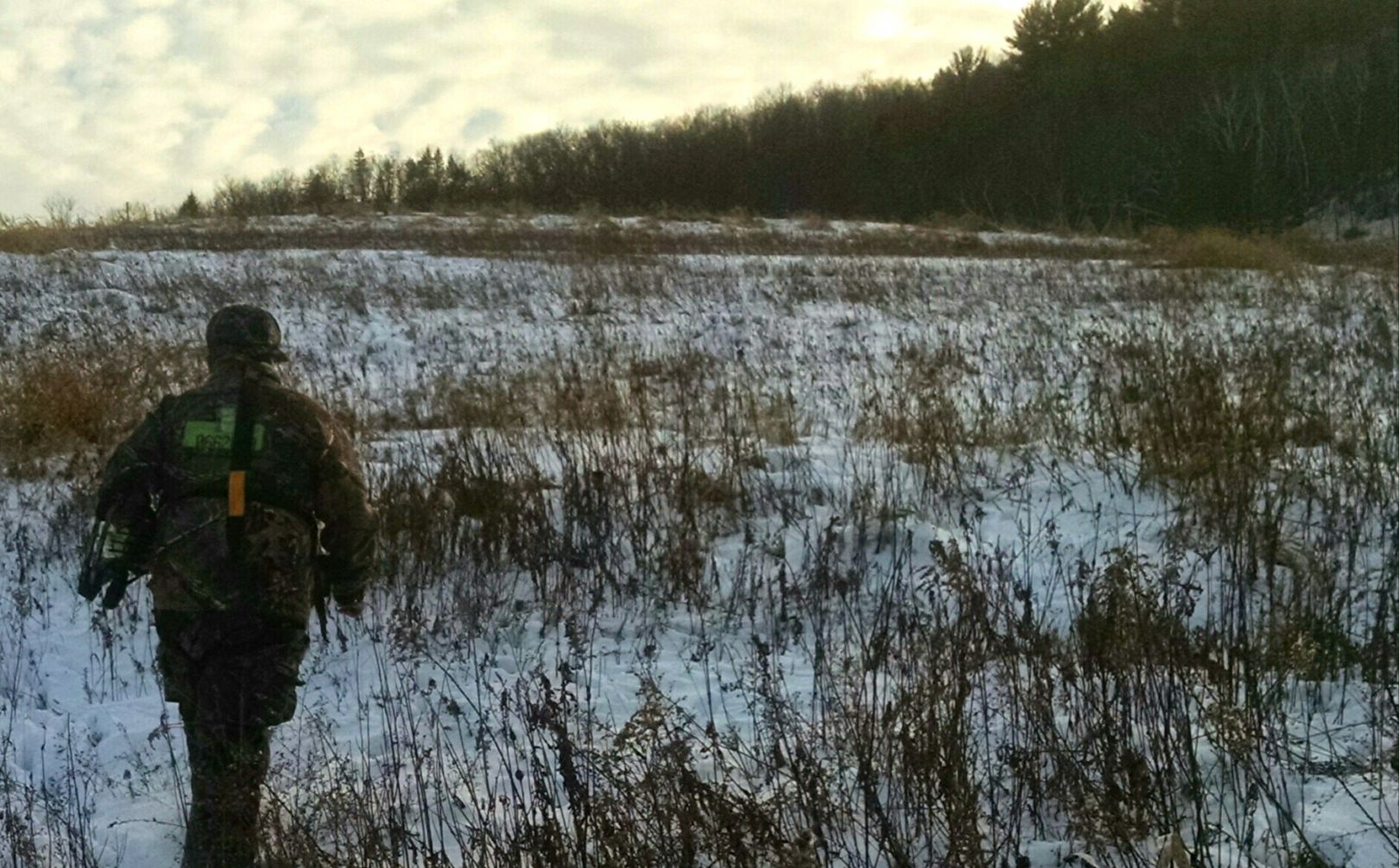
Winter weather whitetail hunting can feature a brutal test of survival for both man and beast, but the frigid efforts are certainly worth the potential of beautiful reward. As a hunter experiencing the entire season of annual Michigan whitetail pursuits since the mid 80s, from October 1st to January 1st, I quickly learned to not only survive all that hunting Winter whitetails had to offer, but to embrace it. There have been times when the snowy woods have seemed still, cold and lifeless, and other times when the changing Winter weather patterns have injected new life into a seemingly vacant whitetail landscape. The 2006 winter weather whitetail harvest picture beloved, created just one of many experiences throughout the decades, that proved there are several snow-scaped deer patterns that can create either feast or famine when you trudge to your favorite deer tree stand.
Is it coming or is it going?
I love big snows! The entire deer herd can be packed into some pretty tight portions of the habitat, and when you figure out where that location is, the number of deer that you will find can rival the best days of the entire season. However, there is a method to the snow madness!

*These Winter weather whitetail results, as well as most any other whitetail related hunting tactic, are covered in my recently completely trilogy of Advanced Whitetail Strategy books, including the recently published“Mature Buck Success by Design”,which details how to scout, prepare, forecast for and consistently kill mature bucks.
Whitetails are often forced into their Winter cover. Most high quality Winter weather habitats feature the thermal properties of conifer or mature native grasses, and neither provide the necessary food components for deer to survive long-term. Cold weather whitetail movements can resemblmean yo-yo of travel patterns, as deer are pushed to find protection when the storms rear their ugly heads, and then eventually pull back to their preferred cool season habitats providing the necessary Winter browsing components of hardwood regeration, briars and shrubs. So you have to ask yourself, is the storm coming or going?
Coming:
I am completely convinced that whitetails know when major weather events are on the horizon. When the barometric pressure begins falling and the winds shift Easterly, deer have a built in weather station that allows them to react 1-2 days or more before an approaching storm. Although this may not mean as much during July, it sure creates a reaction during the late Fall and Winter months! Although I strongly suggest that you hunt the backside of a cold front in September, October and early November, nearly the same sense of urgency should be applied to the period of time that includes the 24 to 36 hours prior to a major snow event. Deer will feed and often feed heavily, with the aggressiveness of their feeding cycles seemingly parallel to the level of severity of the approaching storm. When a major Winter storm is approaching, I recommend that you find a quality Fall food source, and that you concentrate on deer that are relating to that food source all day long.
Here:
Even if the storm is in the middle of bearing down on your region, you can experience great results by hunkering down in the portions of the habitat where deer are forced to survive, including: Conifer swamps, expansive native grass edge habitat and the lee side of major ridge systems. Finding mature bucks and other whitetails bedding “in the sun” may sound like a great cold weather tactic, on paper. However, if the sunny side of a ridge, native grass field or swamp exposes deer to excessive wind, or removes them from the necessary thermal and snow-hinderance habitat they need to survive, you need to follow the deer by ignoring the sun and finding shelter! Make sure that you arrive in the shelter early and stay late, because deer have a tendancy to arrive at any time, in particular if they have been caught within unprotected portions of their Fall habitat and are forced to move as the storm continues.
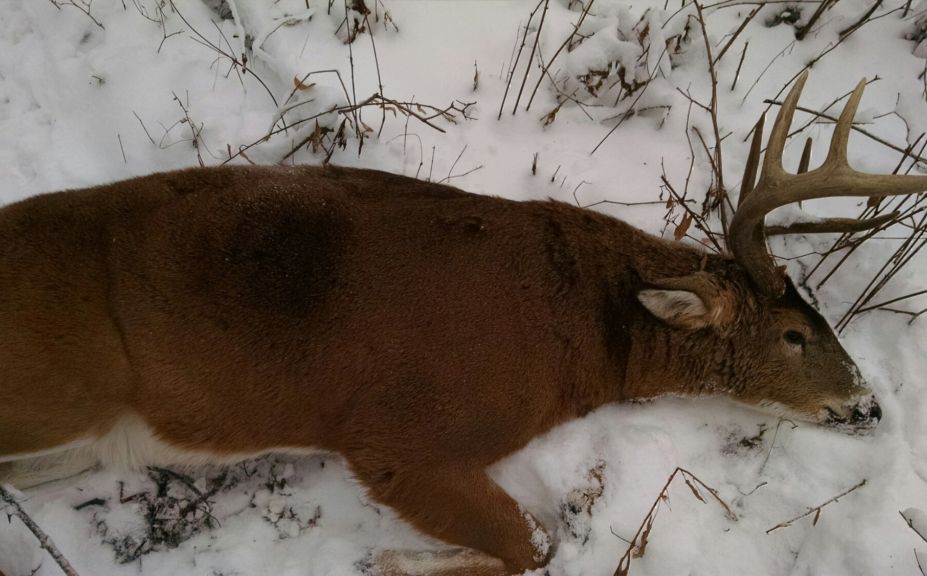
*Deer feed 5 times in a 24 hour period. What does this have to do with hunting whitetails when the conditions turn bitter? To find out make sure to check out, “Deer Feeding Times for Monster Bucks”.
Going:
When the post-storm deer tracks are growing old and frozen, it may be time to return back to the high quality Fall habitats of quality browsing opportunities. This is a time when you can greatly predict some outstanding Winter weather whitetail movements! Imagine a deer herd that has been forced into foodless shelter for 1-2 days or more. During a Winter storm deer are stressed, they miss quality feeding opportunities, and their valuable energy reserves can become quickly depleted. The more severe the storm, the more energy that is consumed by the need to survive.
Conclusion
My kids and I enjoyed a sun-filled photo shoot, following the successful recovery of an end-of-the-season muzzleloader hunt. The snow was packing and wet, the day was warm and comfortable when compared to the previous 72 hours, and mature bucks were obviously on the move! While slipping through the conifers, the UP of Michigan 10 point was moving straight towards a food source, while Southerly winds and a rising barometer hinted of warmer days to come. Using the forecasted conditions as your guide, I have found that you can successfully predict the precise moments that you need to be in position for success, and hunting Winter weather whitetails is no exception.
